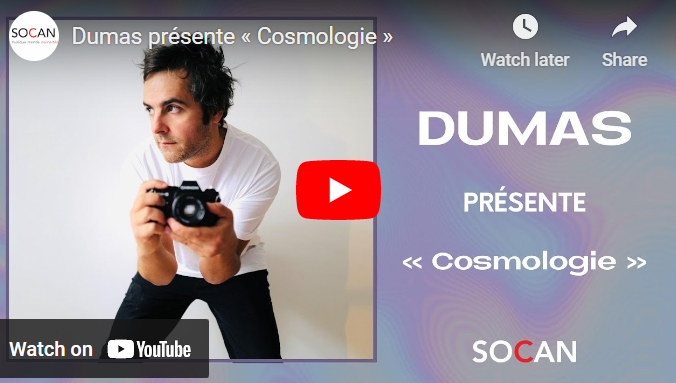Prolific singer-songwriter Dumas is back with – already! – his 12th album. And yet, it’s been five years between the release of Cosmologie (2023) and Nos idéaux (2018). For this project, he mainly worked with producer Philippe Brault, and Jonathan Harnois, with whom he co-wrote most of the lyrics. Although his favourite themes of existentialism and the passage of time are still there, Cosmologie is firmly rooted in the present, rather than in the nostalgia of his previous endeavour. Musically, Brault’s contribution is felt through more electronic elements, adding a synthetic aspect that’s still intimate, overall. Cosmologie also strives to be more raw than the rest of Dumas’ output to date. In the video below, Dumas explains the creative process behind Cosmologie, a short album by most standards (35 minutes), that’s not likely to run out of steam anytime soon.
Photo by Dumas
